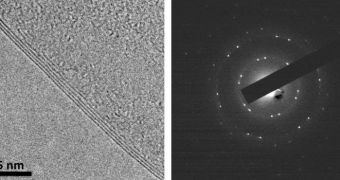As most of you already know, the single-atom-thick carbon compound called graphene is one of the most promising materials being researched today. Discovered just five years ago, the hexagonal material has extraordinary chemical and physical properties, which made researchers say that it will one day replace silicon in electronic devices. But graphene is a conductor, and science also needs an insulator. Rice University experts are currently looking into what is called “white graphene,” an insulator that could work extremely well together with the real thing.
The group is based at the world-renowned Rice Department of Mechanical Engineering and Materials Science, where it's looking into the properties of single-atom-thick layers of hexagonal boron nitride (h-BN). Called white graphene, the material is touted as a complementary approach to using the carbon compound in future electronic devices. Given that one of the materials is a conductor, and the other an insulator, experts say that combining them could provide science with methods of controlling both these aspects in a future electronic equipment.
A team of Rice postdoctoral researchers found a method of combining the two on a single sheet of material earlier this year. In other words, the team at the university is currently capable of producing a sheet that contains strips of graphene dotted by boron nitride islands. The achievement was made in the lab of Pulickel Ajayan, who is the Rice Benjamin M. and Mary Greenwood Anderson professor of mechanical engineering, materials science and of chemistry. Other experts at the lab recently discovered a way of make h-BN sheet, which means that the larger-scale production on materials featuring both graphene and white graphene could soon become possible.
Details of the achievement appear in the latest online issue of the esteemed scientific journal Nano Letters. The team is fairly excited about this development, which has yet to be achieved anywhere else in the world. The new technique, which deposit sheets of pure h-BN onto sheets of pure graphene, was developed under the direct guidance of primary study author Li Song. The Rice team has also learned how to affix the boron nitride sheets to layers of copper only five atoms in thickness.

 14 DAY TRIAL //
14 DAY TRIAL //